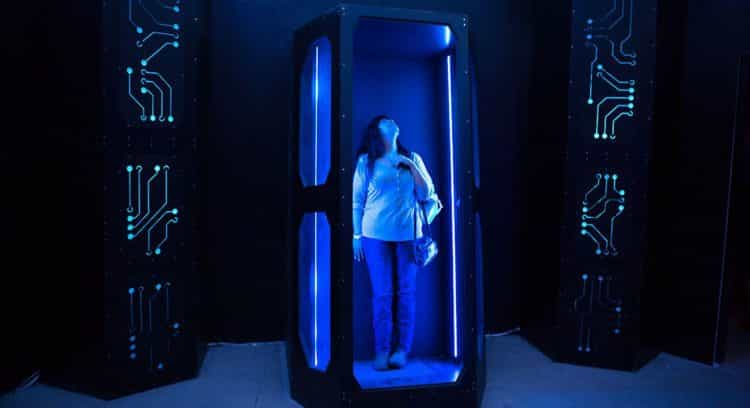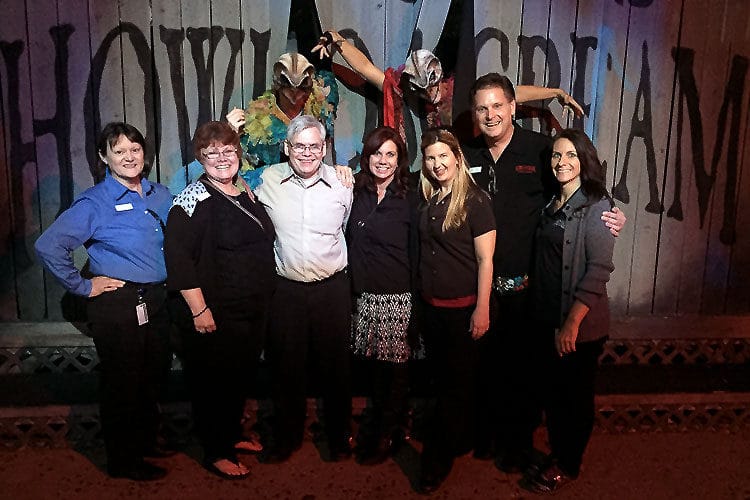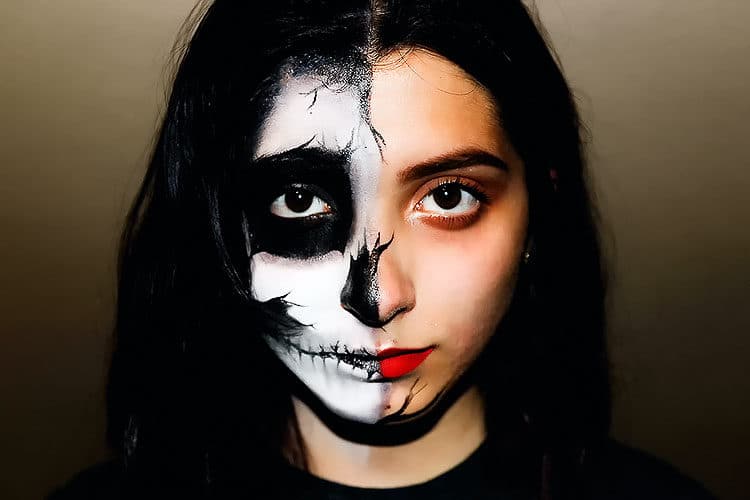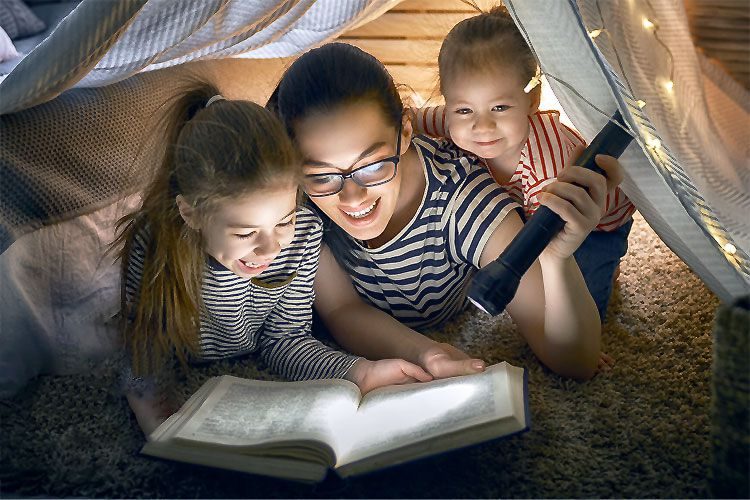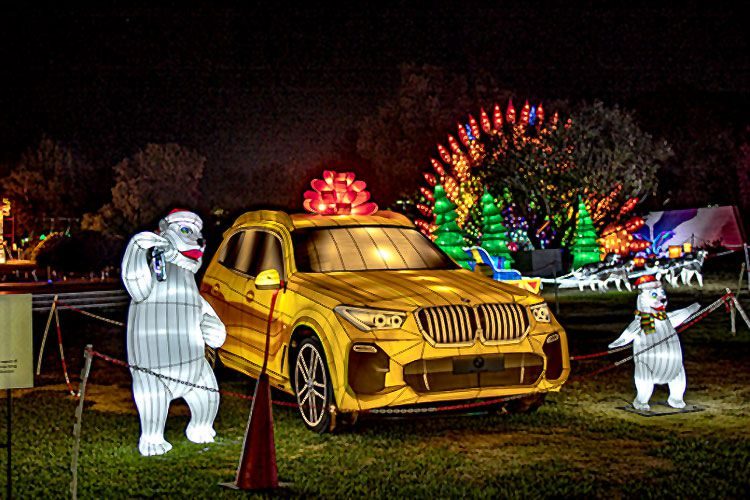Interactive art experiences have exploded in the past decade following the debut of Meow Wolf, which premiered its first installation, Biome Neuro Norb, in Santa Fe in 2008. The publication, Interactive, Intimate, Experiential: The Impact of Immersive Design, describes Meow Wolf’s effect on the art-museum world as “a new category of immersive entertainment surrounding audiences in wild installations.” Meow Wolf received a Themed Entertainment Association Thea Award for “reinventing location-based attractions through nonlinear storytelling.”
Are art installations considered art, entertainment, immersive storytelling, attractions, or all of the above? These art experiences transport audiences into fantastic realms of story by giving the guest a role in the narrative and by allowing guests to make choices.
The installations focus on:
- Interactivity: the guest has a role in the narrative.
- Narrative: a string of story points that create a connected, dramatic arc leading to a climax.
- Agency: guests have limited choice.
- Art brought to life through technology such as virtual reality, projection mapping, and 360-degree audio and visual effects.
The art attraction approach differs from ‘art as something to look at, appreciate, and then move on.’
Seasonal attractions (being location-based) face disruption as the boundaries between mediums continue to blur. Our guests don’t care what category something falls into—they’re just looking for a fun way to spend a day with family and friends. Therefore, what art experiences offer affects guest expectations. Guest expectations are being raised with each innovation in the themed entertainment industry at large.
In this article, we discuss selected location-based attractions that describe themselves as immersive and use art as a foundation of that experience. We describe each experience to provide food for thought about what each of us can do to adapt and innovate.
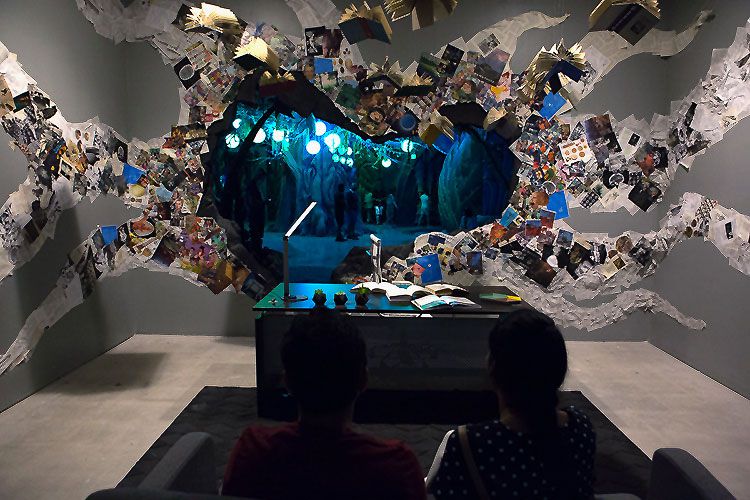
Selected Art Installations from Around the World
- Bridging Home (2018)
Bridging Home features a traditional Korean house and bamboo garden plopped down on a bridge above one of London’s busiest roads. This work is artist Do Ho Suh’s first large-scale outdoor installation in London and reflects his career-long investigation of memory, migration, and the immigrant experience. The experience represents excellent theming of a location-based attraction and limited interactivity.
Flowstate, a creative space in Brisbane, Australia, features an interactive space of contemplation and calm known as JEM. The interdisciplinary Australian firm Eness designed JEM. The installation responds to user interaction. For example, LED-lined arms use a 360-degree laser-tracking system that reacts to movement through pulsating, multi-colored lighting phrases, and rhythmic sounds. Comfy crochet beds invite guests to relax and become absorbed within the dynamic experience while gazing at the sky above. According to its designers, JEM serves to unify people through a shared experience, inviting them to rest, dream, and play in this special space. JEM represents superb use of interactivity.
Borderless, designed by teamLab and located at the MORI Building Digital Art Museum in Tokyo, was the recipient of a 2019 TEA Thea award for “game-changing” technological innovation. Imagine a museum where the exhibits aren’t fixed. What if exhibits moved between rooms and responded in real time to what you do? What if there were no ‘rooms’ but the floor, ceiling, and walls merged into one endless canvas? TeamLab brought together architects, engineers, programmers, CG animators, mathematicians, musicians, and designers to create such a museum in Tokyo. Borderless is a massive, three-dimensional experience that takes place in five zones within a 10,000-square-foot space. The artworks flow out of rooms, communicate with other works, influence, and sometimes intermingle with each other without boundaries.
Coralarium, the world’s first underwater museum, was at the Fairmont Maldives Sirru Fen Fushi luxury hotel in the Maldives. The museum was a stainless-steel cube carved to represent coral and sat in the ocean. An underwater path of coral marked the way into the installation. Accessible only via scuba or boat, the museum contained 30, pH-neutral concrete statues—many of which were casts of local Maldivians—checkered with white fragments of dead coral to promote the colonization of future coral polyps. The artist, Jason deCaires Taylor, explained that the sculptures interact with nature on three different levels. Sculptures on top of the cube sit against the sky; sculptures in the tidal area exist both above and below the water; and sculptures that are completely submerged will eventually be covered by coral. “It’s about taking all the elements of our planet and showing that everything is connected,” said Taylor. “We’re all interdependent, and that’s a fundamental aspect of the installation.” The installation was destroyed by former Maldivian President Abdulla Yasmeen, who declared the sculptures based on casts of real people to be idols that had to be removed to “protect the five tenets of Islamic shariah.”
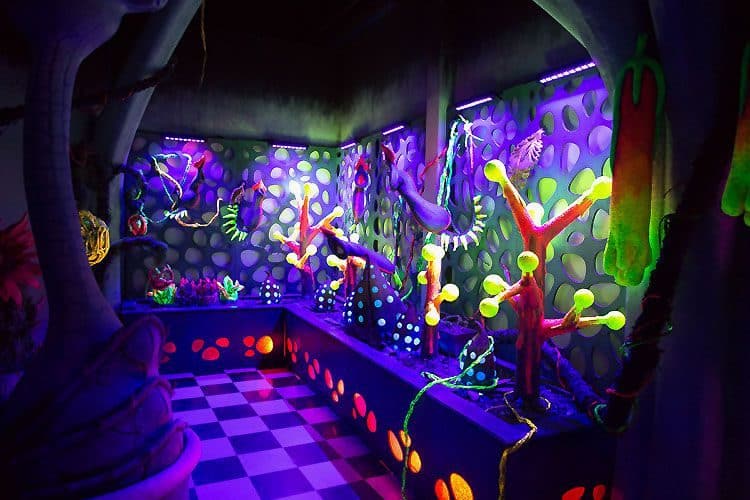
The Otherworld Experience
The purpose of immersive art—like all entertainment and attractions—is to affect the guest. Otherworld has taken this to a new level. Jordan Renda, a 26-year-old Ohio State graduate, is the founder and creative director of Otherworld, in Columbus, Ohio. This 32,000-square-foot, immersive art installation, which contains 47 rooms filled with large-scale, interactive art, mixed reality playgrounds, puzzles, and secret passageways, opened on May 24, 2019.
Mini-stories push the overarching narrative.
Guests volunteer to be beta testers at Otherworld Industries, a pioneering tech company specializing in alternate-realm tourism. Upon arrival at the desolate research facility, guests are left on their own. As they explore restricted laboratories, they pass through a gateway to bioluminescent dreamscapes featuring alien flora, primordial creatures, and expanses of abstract light and geometry. Within this Otherworld are environments with “mini-stories” that push the larger overarching narrative, similar to a choose-your-own-adventure role-playing game. Guests wander through rooms and choose quests to follow.
Guests interact with the environment through a variety of media.
Guests experience the story by physically interacting with objects and the environment. Otherworld uses essentially all mediums except live actors to push the narrative. For instance, guests can unlock employee computers to read email chains, watch surveillance footage, and listen to voicemails. Each story fragment allows guests to piece together events leading to Otherworld Industries’ discovery of—and subsequent amalgamation with—the Otherworld. Guests touch sensors that send waves of light up through enormous sculptural elements. ‘Mixed-reality rooms’ bring interactions usually only found in the imagination or on computers into the real world.
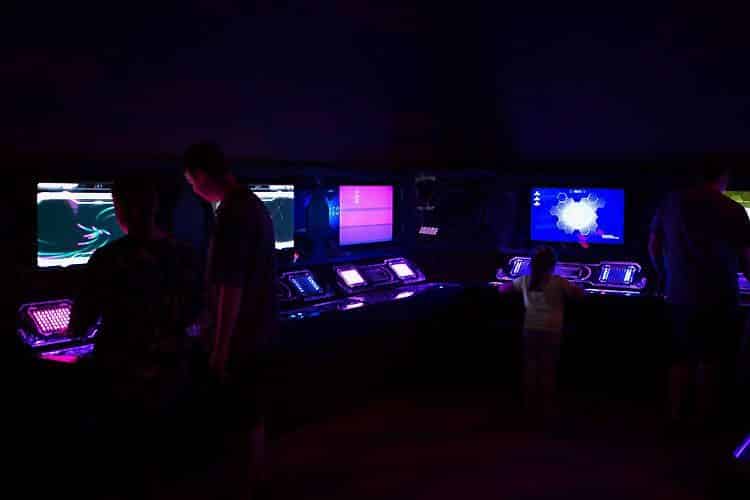
Voice-reactive rooms and musically reactive surfaces create an ever-changing audio world.
Some examples of the experiences are: a fuzzy monster that guests can climb into; vertical LED lights that respond to movement; stations where guests can alter each other’s experiences; visually and musically reactive surfaces for guests to interact with; voice-reactive rooms that respond to speech and shouts; computer and digital systems that turn certain rooms into interactive “songs,” where the elements all play musical sounds tuned to come together in harmonic combinations.
A realm of massive, interactive, cave-dwelling creatures and 20-foot-tall LED towers that respond to touch.
The pieces in the installation are large-scale and include 18-foot, 19-eyed, cave-dwelling creatures, 70-foot by 20-foot projection mapped structures, and 20-foot-tall LED towers. Guests are surrounded with reactive, projection-mapped surfaces they can touch.
Is it an installation, is it theater, is it role-playing, or is it an immersion?
Otherworld’s narrative sets it apart from other art installations—making the experience more like immersive theater. In Otherworld, the story is told with video and audio logs instead of actors, added to which is role-playing. “It’s about creating the next generation of art and storytelling experiences. It’s about turning the passive viewer into an active participant,” Renda explained. Turning a viewer into an active participant is the primary component of the immersive trend.

The Guest Influences the Environment
Renda states that the purpose of guests exploring the fantasy environment is to allow them to connect with the work in a deeper and more meaningful way. Guests are encouraged to touch the art and make things happen in the environment. They have a role in the narrative, so there’s a sense of purpose, of being able to control or at least influence the experience. This aspect is borrowed from escape rooms, which provide guests a role to perform. However, strictly speaking, Otherworld isn’t a fully immersive experience, because there are no consequences to decisions made by visitors and no climax to the narrative. “We want to remind people there’s a whole world of imagination out there, not in an escapist kind of way but in an inspirational kind of way,” said Renda.
The Birth of Otherworld
Renda describes Otherworld as a combination escape room/role-playing game, art installation, mixed-reality playground, and haunted house, all of which form an interactive art installation that’s tied together by the narrative. The mash-up of various technologies and venues creates a new kind of experience. There are hands-on opportunities in every room.
Part of the evolution of Otherworld came from Renda’s idea that the escape-game model would be much more engaging if visitors had unlimited time to explore a 30,000-square-foot environment instead of 300-square-foot space. Meow Wolf was also an inspiration for Renda, because that organization validated the model for explorable, themed, story attractions. Renda pitched his idea for what became Otherworld to a few banks and, to his delight, received funding. The original production budget was about $1.9 million, and an additional $500,000 was sought via a Kickstarter fund to add more layers of visual art, narrative, and gamification. Renda began work on Otherworld full time in mid-2017.
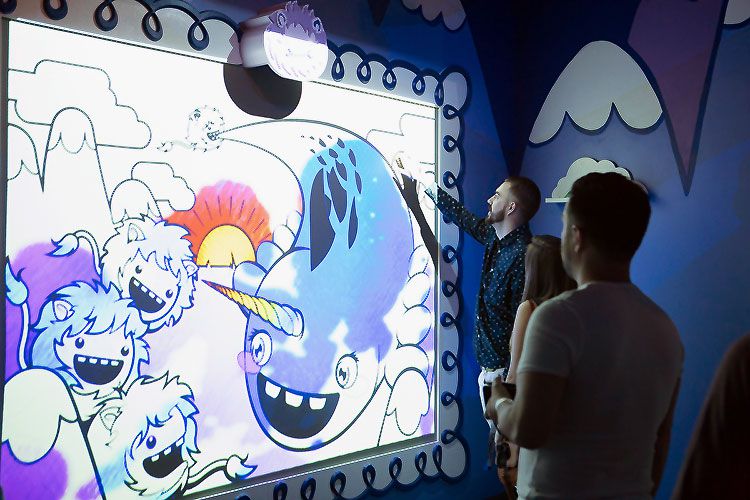
The Technology of Otherworld
Otherworld uses live-motion capture to track guests’ movements, which allows the space to dynamically react to visitors’ presence and create intuitive, visual interactions. Technical effects rely primarily on live computer models and projection/LED mapping for the technical effects. Microcontrollers and sensors throughout the space create puzzles and games that bring guests deeper into the story.
Bringing in the Next Generation of Otherworld Creatives
Renda and his team hope to keep the experience open as long as they can and to potentially expand to other buildings. A goal for Otherworld is to give back to its surrounding Columbus community. Renda’s team has plans to incorporate art, science, and design classes for local students in which the students will design a room inside Otherworld and build it from the ground up. The process will incorporate a STEAM (science, technology, engineering, art, and math) curriculum.
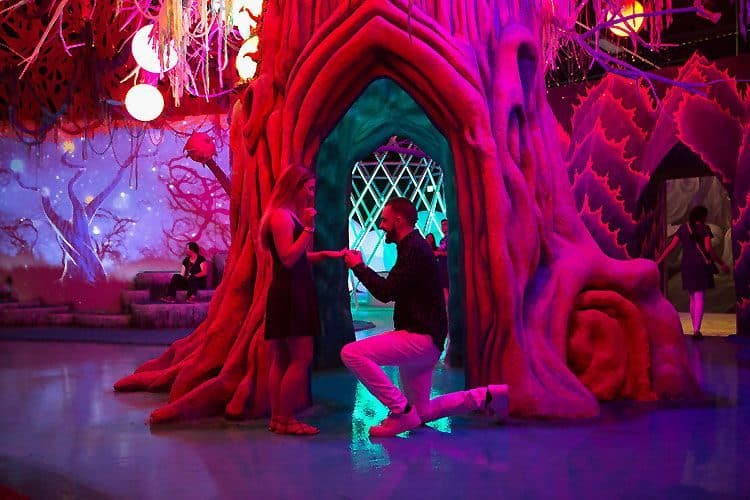
Key Takeaways
- The purpose of immersive and interactive art experiences is to transport audiences of all ages into fantastic realms of story and exploration by not only directly engaging the guest in the narrative but allowing the guest to control or influence their experience.
- Seasonal attractions (being location-based) face disruption as the boundaries between mediums continue to blur. Our guests don’t care what category something falls into—they’re just looking for a fun way to spend a day with family and friends. Therefore, what art experiences offer affects guest expectations. Guest expectations are being raised with each innovation in the themed entertainment industry at large.
- Otherworld is a 32,000 square foot immersive art installation that opened on May 24, 2019 in Columbus, Ohio. The venue contains 47 rooms filled with large-scale, interactive art, mixed reality playgrounds, puzzles, and secret passageways.
- Within this Otherworld are environments with “mini-stories” that push the larger overarching narrative, similar to a choose-your-own-adventure role-playing game.
- One thing that sets Otherworld apart from other interactive art installations is the addition of story—which makes it more like immersive theater, except there are no live actors. In Otherworld, the story is told with video and audio logs instead of actors, added to which is role-playing.
- Guests are encouraged to touch the art and make things happen in the environment, so there’s a sense of agency, of being able to control or at least influence the experience.
- Otherworld as a combination escape room/role-playing game, art installation, children’s science center, and haunted house, all of which forms an interactive art installation that’s tied together by the narrative.
